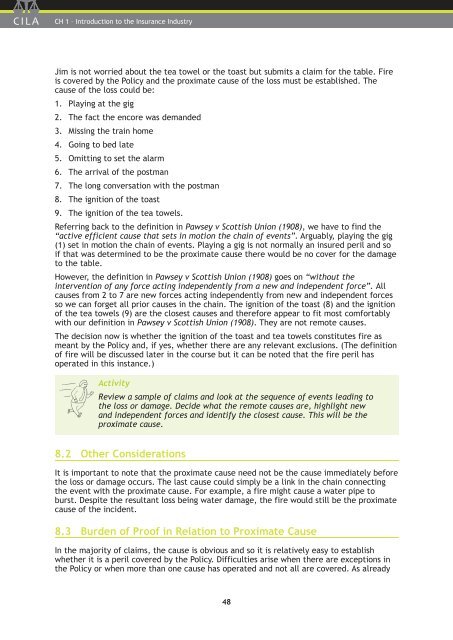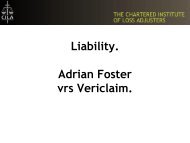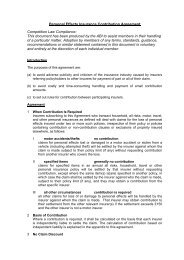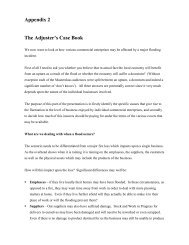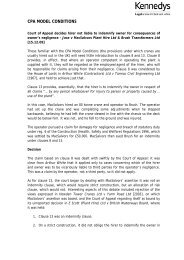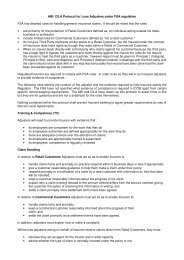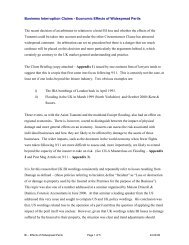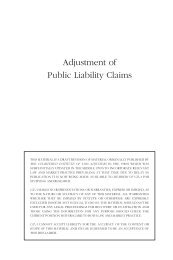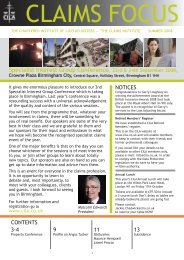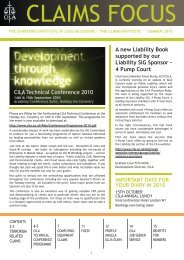Proximate Cause
Proximate Cause
Proximate Cause
- No tags were found...
Create successful ePaper yourself
Turn your PDF publications into a flip-book with our unique Google optimized e-Paper software.
CILACH 1 Introduction to the Insurance IndustryJim is not worried about the tea towel or the toast but submits a claim for the table. Fireis covered by the Policy and the proximate cause of the loss must be established. Thecause of the loss could be:1. Playing at the gig2. The fact the encore was demanded3. Missing the train home4. Going to bed late5. Omitting to set the alarm6. The arrival of the postman7. The long conversation with the postman8. The ignition of the toast9. The ignition of the tea towels.Referring back to the definition in Pawsey v Scottish Union (1908), we have to find theactive efficient cause that sets in motion the chain of events. Arguably, playing the gig(1) set in motion the chain of events. Playing a gig is not normally an insured peril and soif that was determined to be the proximate cause there would be no cover for the damageto the table.However, the definition in Pawsey v Scottish Union (1908) goes on without theintervention of any force acting independently from a new and independent force. Allcauses from 2 to 7 are new forces acting independently from new and independent forcesso we can forget all prior causes in the chain. The ignition of the toast (8) and the ignitionof the tea towels (9) are the closest causes and therefore appear to fit most comfortablywith our definition in Pawsey v Scottish Union (1908). They are not remote causes.The decision now is whether the ignition of the toast and tea towels constitutes fire asmeant by the Policy and, if yes, whether there are any relevant exclusions. (The definitionof fire will be discussed later in the course but it can be noted that the fire peril hasoperated in this instance.)ActivityReview a sample of claims and look at the sequence of events leading tothe loss or damage. Decide what the remote causes are, highlight newand independent forces and identify the closest cause. This will be theproximate cause.8.2 Other ConsiderationsIt is important to note that the proximate cause need not be the cause immediately beforethe loss or damage occurs. The last cause could simply be a link in the chain connectingthe event with the proximate cause. For example, a fire might cause a water pipe toburst. Despite the resultant loss being water damage, the fire would still be the proximatecause of the incident.8.3 Burden of Proof in Relation to <strong>Proximate</strong> <strong>Cause</strong>In the majority of claims, the cause is obvious and so it is relatively easy to establishwhether it is a peril covered by the Policy. Difficulties arise when there are exceptions inthe Policy or when more than one cause has operated and not all are covered. As already48


